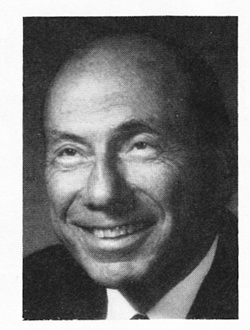A New Look At Class II Malocclusion
A recent article (Angle Orthodontist, July 1981) by Dr. James McNamara should have shaken the orthodontic world. He stated that maxillary skeletal protrusion is not a common finding in Class II malocclusion; that, in fact, more cases of maxillary retrusion were observed; and further, that mandibular skeletal retrusion was the most common single characteristic of the Class II sample studied.
The article also presented a picture of Class II malocclusion that should be disquieting to those who have a fixed view of Class II and who treat every Class II case in the same manner. The article selected five characteristics for study--maxillary skeletal position, maxillary dental position, mandibular skeletal position, mandibular dental position, and the vertical component--and found that of the 243 possible combinations of retrusive, protrusive, and neutral relation of these five, only one combination represented so much as 10% of the total sample of 277 Class II malocclusions.
In order to disagree with the findings, you would have to find fault with the method of case selection or with the method of analysis or with the Angle classification itself, or you could say that this is only one study. If one accepts the methods and the findings, however, the conclusions drawn call for some sober reflection. For example, how many of us routinely place a cervical or high pull headgear onto the molars in a Class II to correct the relationship by holding back the maxilla? If the maxilla we are holding back is neutral or retrusive, how serious might that be in compromising the patient's facial esthetics? The expected headgear effect is to retrude the maxilla.
Perhaps the biggest treatment problem in orthodontics is forced upon us by the dual concept that, in Class II malocclusions, the maxilla is protrusive and the mandible is a given--that the mandible cannot be brought anteriorly if it is retrognathic. That makes it seem all right to retract the maxilla or the maxillary dentition to a deficient mandible as the best orthodontic solution available. Suppose, however, that maxillas in Class II are rarely protrusive, are more often neutral or already retrusive. How much would one be willing to retract that maxilla to accommodate a retrusive mandible? A small amount might not compromise the facial esthetics, but if a VTO could establish that facial esthetics would be compromised, what are the alternatives then? One could persist in retracting uppers to lowers. One could straighten irregular anteriors and not correct the anteroposterior relationship. One could straighten the anteriors and tip lower anteriors forward. In a growing individual, one could elect to use the appropriate functional appliance at the appropriate time, in conjunction with orthodontic treatment, keeping in mind the headgear effect of many functional appliances. In a non-growing individual, one could elect to perform orthognathic surgery for mandibular advancement, in conjunction with orthodontic treatment. One could elect not to treat.
In this same article, McNamara pointed out--as Sassouni and Krogman did 25 years ago--different cephalometric analyses arrive at opposite conclusions about the same characteristics. It seems apparent that orthodontists require a diagnostic analysis that will determine the truest picture at least of the five characteristics used in the McNamara study, and a picture of what the case will look like with and without certain treatment approaches. In many instances, it may be determined that the traditional compromise is acceptable. When that is not the case, which of the alternatives would you choose? Would you go ahead anyway with the traditional approach, knowing that the facial esthetics would be compromised? Would you not treat, knowing that facial esthetics, dental esthetics, and dental function would be less than satisfactory? Would you move lower anteriors forward to an unstable and questionable position? Would you try a functional appliance? Or, would you prescribe orthognathic surgery now or at some later date? Most orthodontists who accept the McNamara results would probably try a functional appliance.
Another recent study (Moyers et al, AJO, November 1980) parallels the McNamara study. It identified six different horizontal types and five different vertical types in Class II. While all the vertical types are not found with all the horizontal types, it does make for a large possible combination of types. The authors suggested that these combinations can be identified, and that they form distinct typal groups that look alike, grow alike, should be treated alike, and respond to treatment alike. The next step is the formalization of an analysis that can pinpoint the Class II category for the individual patient.
The Angle classification has been a handy way of communicating for orthodontists, but it is much too general and lumps together too many different skeletal and dental configurations. It has been misleading at times, when only the molar relationship has been relied upon to categorize a malocclusion. It has resulted in a standardization of Class II treatment in many offices, without regard to the variations in combinations of horizontal and vertical skeletal and dental components.
It seems likely that, developing out of the McNamara and Moyers approaches, there will be a grid that will spread out Class II cases into numerous categories, and specialize the diagnosis and treatment plan for each individual. This may merely be a simplification, modification, or extension of present information. Within the limitations of lateral cephalometry, there are analyses now that seem to do a better job of individualizing diagnosis and treatment planning. One could mention the Ricketts, Rocky Mountain Data Systems, Muzj, and Coben analyses, to name a few--and the McNamara analysis which is a modification of some of these.


